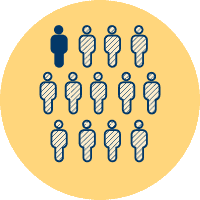Section 2: Open Election Data Principles
Introduction
Many organizations collect data to perform their functions or to provide a service. Public institutions, such as election management bodies (EMBs), produce and collect large amounts of data. In many countries, the data collected by these public institutions is, by law, public data. It makes sense that such public data should effectively be shared with the public. In addition, data collected is often the basis for decision making as well as implementation. By sharing that data, a public institution is demonstrating its intent to be transparent about its decision making and implementation processes. Citizens and organizations can also use that data to hold public institutions accountable. Making data 'open' refers to sharing the data in ways that make the data freely and easily used, reused, and redistributed by members of the general public.
As described in this section,'open' election data is:









Open data, especially open election data, is an immense resource that has only recently been tapped. Even though the 'open data' field is young, there are already numerous examples of the ways in which it has already created both social and economic value around the world. When election data is "opened up," it can:
- Increase the transparency of individual election processes when, for example, citizen election monitoring organizations combine it with their monitoring efforts;
- Improve the effectiveness of an election management body when, for example, it allows voters to check those registered at their address or when the images of results forms are released and citizens can check the transcription of results;
- Increase voter participation in elections when, for example, citizen organizations use registration rates to help historically marginalized populations register to vote or when political parties use the information in voter outreach;
- Increase citizen engagement when, for example, the results of individual polling stations are released and voters can check the results of their station and compare it to nearby stations;
- Improve the inclusiveness of traditionally marginalized groups when, for example, citizens organizations use information to advocate for the accessibility of polling station or for ballots in local languages;
- Reduce tension when, for example, election monitoring organizations combine results data with their assessment of the election day process and make early projections of the results;
- Generate new insights when, for example, citizen organizations combine results data with information on the location of political violence.
There is still much untapped potential in making election data more open. The following open election data principles provide a way of unleashing that potential.
